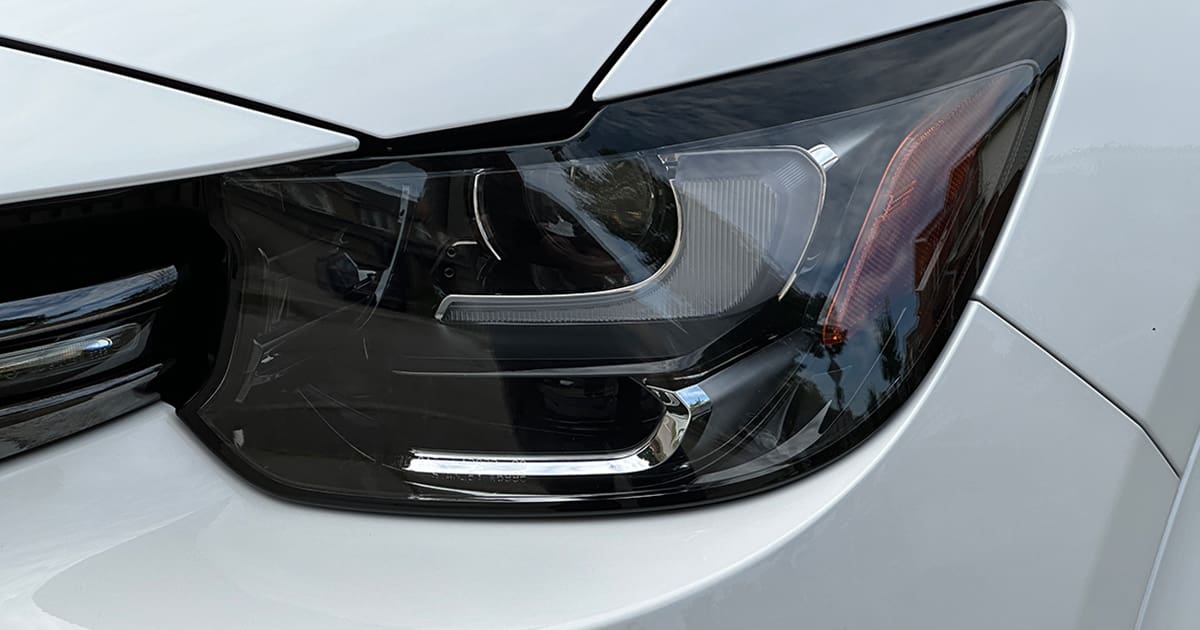Every fall, car stereo and automotive accessory shops install thousands of lighting upgrades. These days, the most common upgrade is a set of LED headlight bulbs that fit into the stock light locations. Though it may seem simple, the resulting beam pattern can suffer if the selected bulbs aren’t specifically designed for the lens or projector application. Let’s take a close look at understanding headlight beam patterns.
What Is a Headlight Beam Pattern?
Let’s kick this off with a bit of a definition. A beam pattern describes how the light from the headlight assembly illuminates the road. Designers put a lot of science into creating the reflector and lens to focus light effectively. Headlights must also prevent blinding oncoming drivers. Misaligned or malfunctioning headlights can put everyone on the road at risk. Extremely bright headlights that blind others are dangerous and often perform poorly at long distances, reducing your safety.
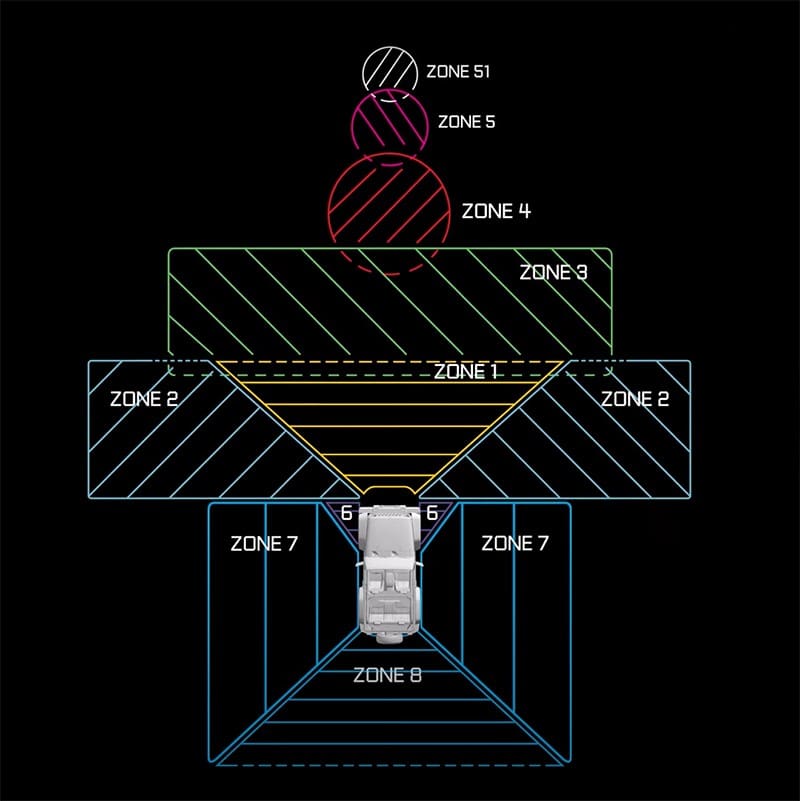
Off-Road Versus On-Road Lighting
In an off-road setting, the driver wants maximum light coverage, and lighting up trees isn’t a big concern. However, on the road, it’s essential to control where the vehicle’s light goes. The problem with this light is that it still shines directly into the oncoming driver’s eyes. This creates a dangerous situation, as it prevents them from seeing obstacles in front of them, including your vehicle, the road, or animals.
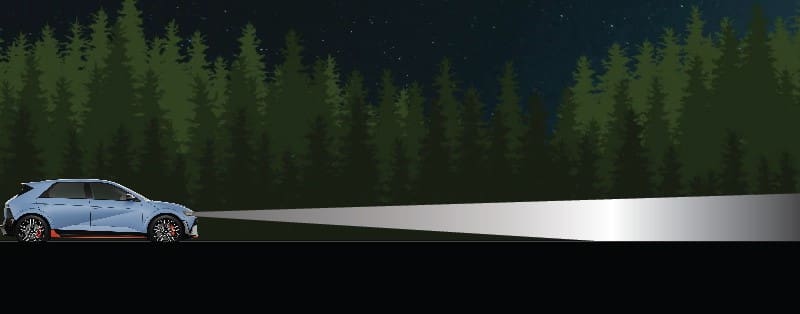
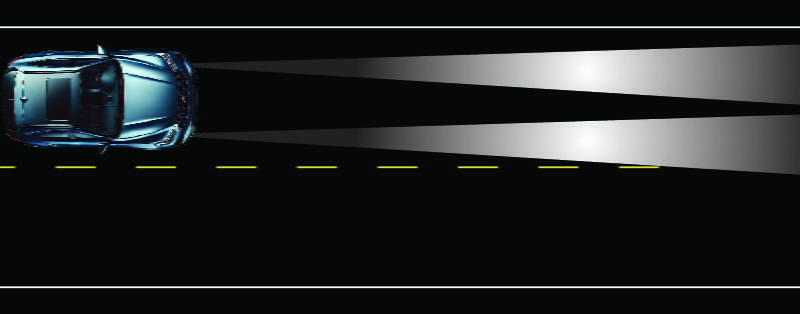
The solution might be to angle the lights down so the top of the beam is below horizontal. The problem with this method is that the hot spot in the middle of the light is no longer way out in front of the vehicle. Most of the light will illuminate an area about 50 feet away. We don’t need to see this part of the road as much as we need to see 100 feet and beyond. Further, with the foreground so bright, the iris in our eyes will close to reduce the total light we see. This reduces how much we can see objects in the shadows or long distances.
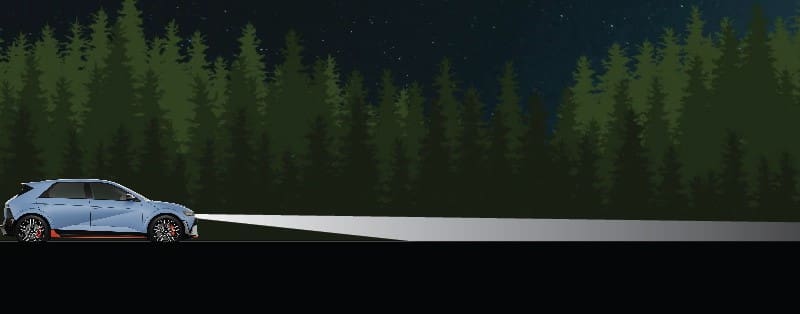
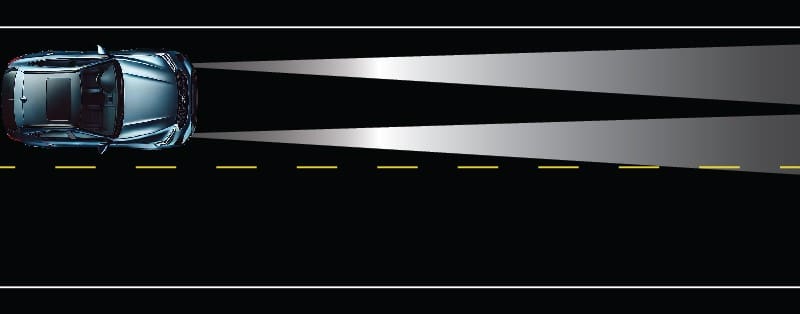
Proper Automotive Headlight Systems
Many new cars and trucks use LED projector headlights; although some models may use reflector-type headlights, HID lights, or halogen bulbs. In the case of projector light assemblies, a cut-off feature assists in creating a good beam pattern. The goal of the lighting system is to illuminate the road as far as possible without making the foreground too bright. This requires a well-focused hot spot in the middle of the light and a way to prevent oncoming drivers from being blinded.
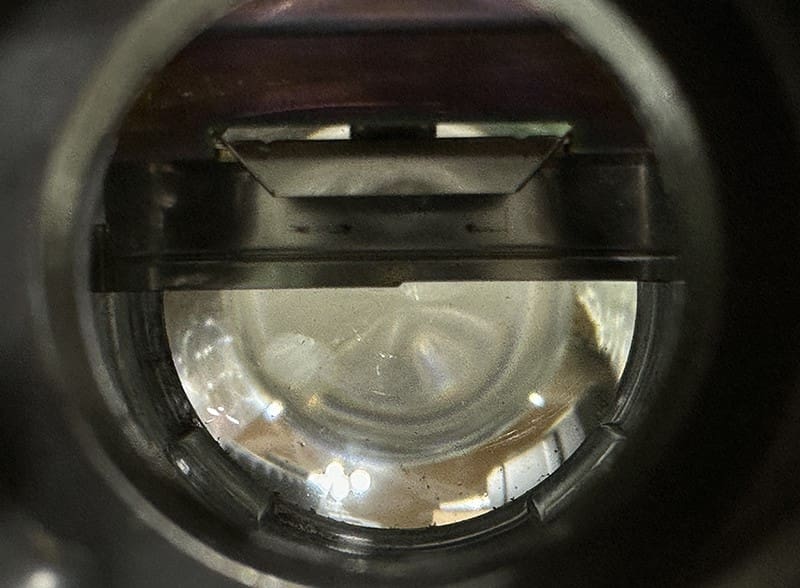
If you look closely at the image, you’ll notice a metal plate in the center of the light assembly with a notch. This plate is positioned to bisect the hot spot of the light beam. When the vehicle faces a wall, you’ll observe the step down on the left side of the light and a hot spot in the middle of that step.
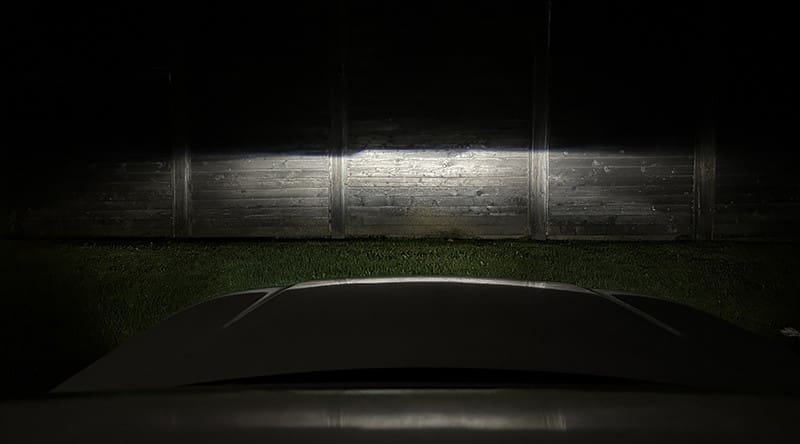
Asymmetric Low Beam Pattern
The step in the shutter reduces light on the left side of the road. This allows the lane ahead to remain well-illuminated while minimizing glare for oncoming drivers. This design is called an Asymmetric Low Beam Pattern. The aerial image below shows the beam pattern from the SUV and its effect on the ground.
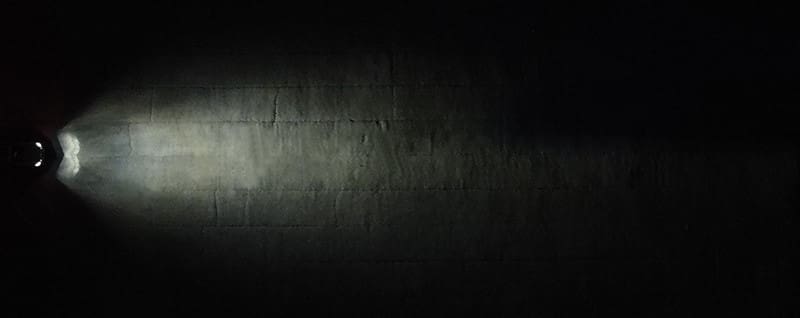
If you look closely at the pattern produced by the headlights, you can see a beam of light extending almost off the image’s right side. This light is in line with the vehicle’s direction of travel and will light the road far off into the distance.
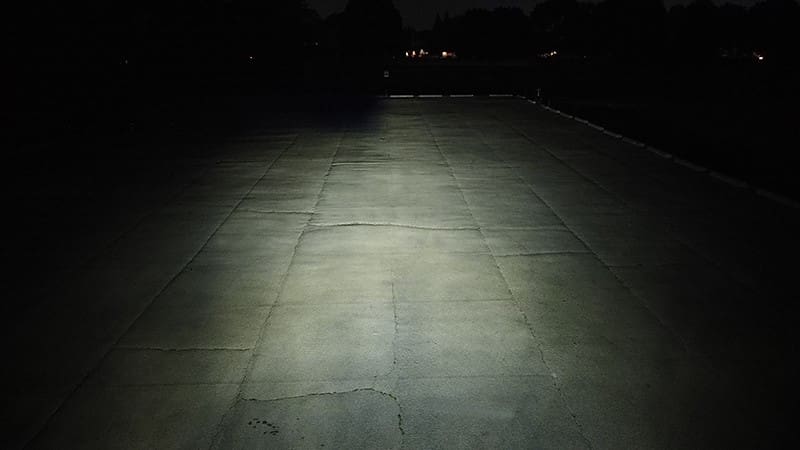
What to Know When Upgrading Headlights
If you plan on upgrading the lighting on your vehicle, ensure the changes you make don’t negatively affect the beam pattern. First, the hot spot should remain in the center and not dramatically brighten the foreground. The cutoff must remain sharp so as not to blind oncoming drivers. Technically, any bulbs you install must comply with FMVSS and display the appropriate markings to be legal for on-road use.
Something is wrong if the lights don’t seem as bright or there are streaks of light pointing off to the side or upward. Have the shop reinstall the original bulbs until you find a perfect solution.
